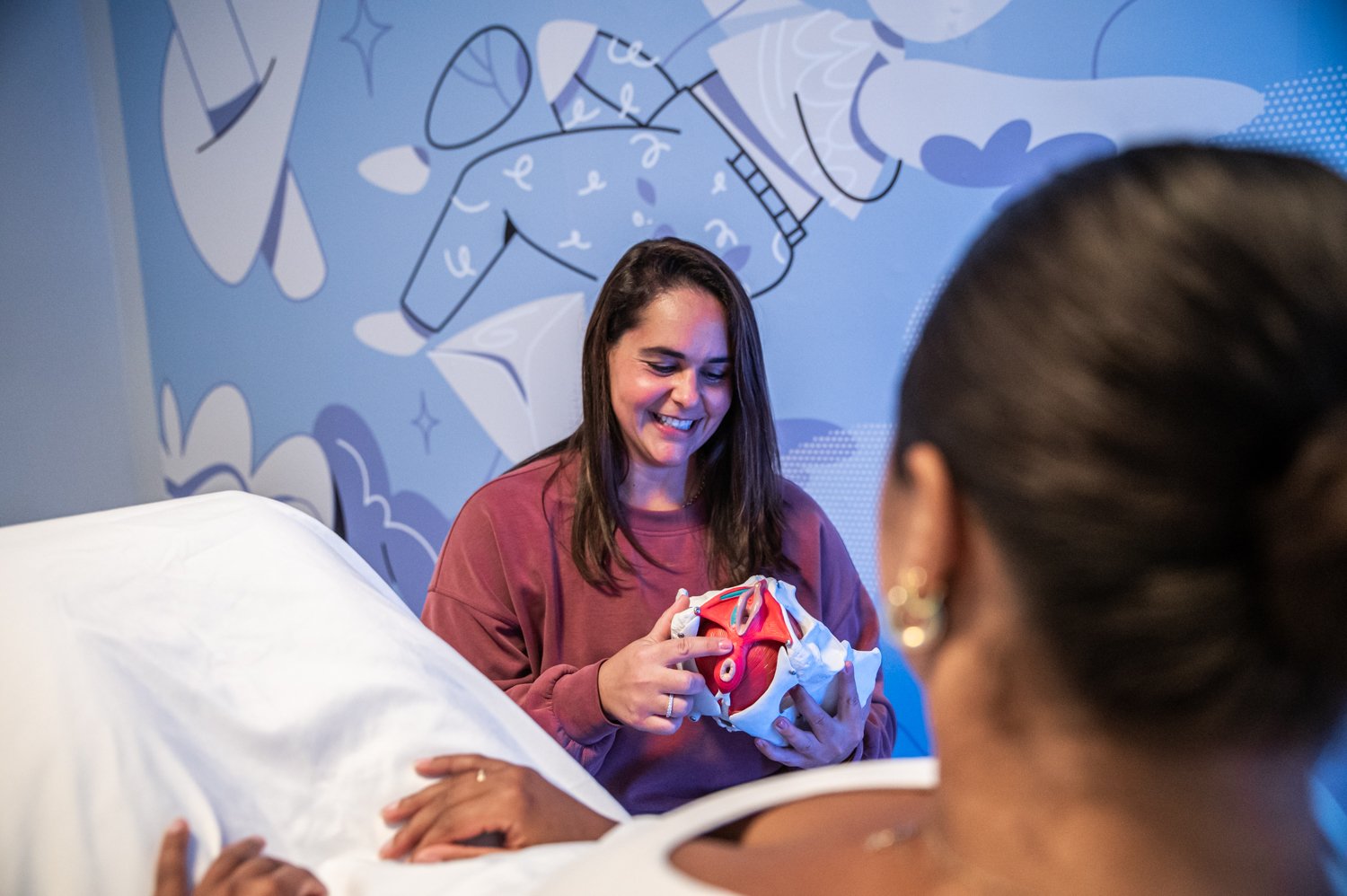C-Section Recovery & Diastasis Recti: Expert Physical Therapy Care in Charlestown
Recovering from a C-section involves more than just healing the incision—it also requires rebuilding core strength and restoring pelvic floor function. Many women experience abdominal weakness, scar tissue restrictions, and diastasis recti, a common postpartum condition where the abdominal muscles separate due to pregnancy.
While these changes are natural, they can lead to lower back pain, core instability, and difficulty with daily movements if not properly addressed.
Pelvic floor physical therapy (PFPT) plays a crucial role in guiding a safe and effective recovery after a C-section. At The Method in Charlestown, Boston, Massachusetts, we help new mothers regain strength, improve mobility, and heal from diastasis recti through personalized therapy.
In this guide, we’ll explore how PFPT supports recovery, the best exercises to restore core stability, and what steps you can take to feel strong and confident postpartum.
READ: Returning to Running Postpartum: What You Need to Know
Understanding Diastasis Recti After a C-Section
Diastasis recti is a common postpartum condition where the abdominal muscles separate due to the stretching of connective tissue during pregnancy. This separation occurs along the linea alba, the band of tissue running down the center of the abdomen. While diastasis recti can happen after both vaginal and C-section births, a C-section incision can further weaken the core muscles and slow recovery.
Many new mothers may notice signs of diastasis recti, such as:
A visible gap or bulging along the midline of the abdomen
Core weakness, making it difficult to sit up or lift objects
Lower back pain due to a lack of core support
Pelvic floor dysfunction, including incontinence or pressure
Ignoring diastasis recti can lead to long-term core instability, poor posture, and increased strain on the lower back and pelvis. This is why early intervention with pelvic floor physical therapy is essential. At The Method, we assess the degree of separation and create a customized plan to help restore core integrity while ensuring a gentle and safe recovery.
How Pelvic Floor Physical Therapy Aids C-Section Recovery
Recovering from a C-section involves more than just waiting for the incision to heal—it requires intentional rehabilitation to restore strength, mobility, and function. Since a C-section involves cutting through layers of abdominal tissue, scar tissue formation, core weakness, and pelvic floor dysfunction are common challenges. This is where pelvic floor physical therapy (PFPT) plays a key role.
At The Method, our approach to C-section recovery includes:
Scar Tissue Mobilization – Gentle hands-on techniques help reduce tightness and adhesions, improving mobility and preventing discomfort. Scar restrictions can contribute to lower back pain, abdominal tightness, and even digestive issues, so early intervention is essential.
Pelvic Floor Reconnection – A C-section can weaken the deep core and pelvic floor muscles, leading to issues like urinary leakage, pelvic pain, or instability. Physical therapy focuses on restoring coordination between the core and pelvic floor, ensuring these muscles function optimally.
Breathwork & Core Activation – Learning how to engage the deep core muscles through diaphragmatic breathing and gentle core activation can help restore strength without putting excess pressure on healing tissues.
By addressing these key areas, PFPT helps new mothers recover more effectively, reduce discomfort, and safely regain strength—allowing them to return to daily activities with confidence.
READ: Physical Therapy for Sports Injuries: Recovering and Returning Stronger
Safe & Effective Exercises for Healing
A gradual and intentional approach to movement is essential for C-section and diastasis recti recovery. The wrong exercises—such as crunches or planks too soon—can worsen muscle separation and strain healing tissues. Instead, pelvic floor physical therapy (PFPT) focuses on safe, progressive exercises that support core and pelvic floor rehabilitation.
Here are a few gentle, effective exercises recommended for early postpartum recovery:
Diaphragmatic Breathing – This deep breathing technique helps activate the deep core muscles and promotes proper coordination between the diaphragm and pelvic floor.
Pelvic Tilts – Small, controlled tilts while lying on the back help engage the transverse abdominis, the deepest layer of abdominal muscles responsible for core stability.
Heel Slides – Slowly sliding one foot away from the body while maintaining a neutral spine encourages core engagement without excessive strain.
Glute Bridges – A great way to gently strengthen the glutes and lower back, supporting overall core function.
Side-Lying Leg Lifts – Helps improve hip stability and pelvic alignment while avoiding direct pressure on the healing abdominal muscles.
What to Avoid
Certain movements can delay healing or worsen diastasis recti. It’s best to avoid:
Traditional crunches or sit-ups
Deep twisting motions
Heavy lifting without proper core engagement
High-impact exercises too soon
At The Method, our physical therapists create a personalized exercise plan to safely restore strength and function, ensuring that every movement supports healing and long-term recovery.
READ: So you’re told you have Diastasis recti…
Restoring Strength & Confidence After Birth
Recovering from a C-section and diastasis recti takes time, but with the right guidance, you can safely rebuild strength, improve mobility, and regain confidence in your body. Pelvic floor physical therapy (PFPT) is a key part of this process, helping new mothers heal from scar tissue restrictions, core weakness, and pelvic floor dysfunction while preventing long-term complications.
At The Method, we provide expert, hands-on care for postpartum recovery in Charlestown. Whether you’re experiencing discomfort, struggling with core instability, or simply want to feel stronger after birth, our customized physical therapy programs are designed to support your journey.
Take the first step toward a strong and confident recovery. Contact The Method today to schedule your postpartum physical therapy session and start feeling like yourself again.


